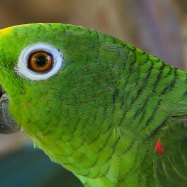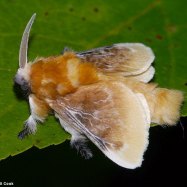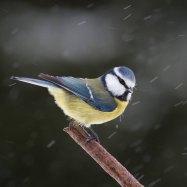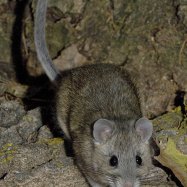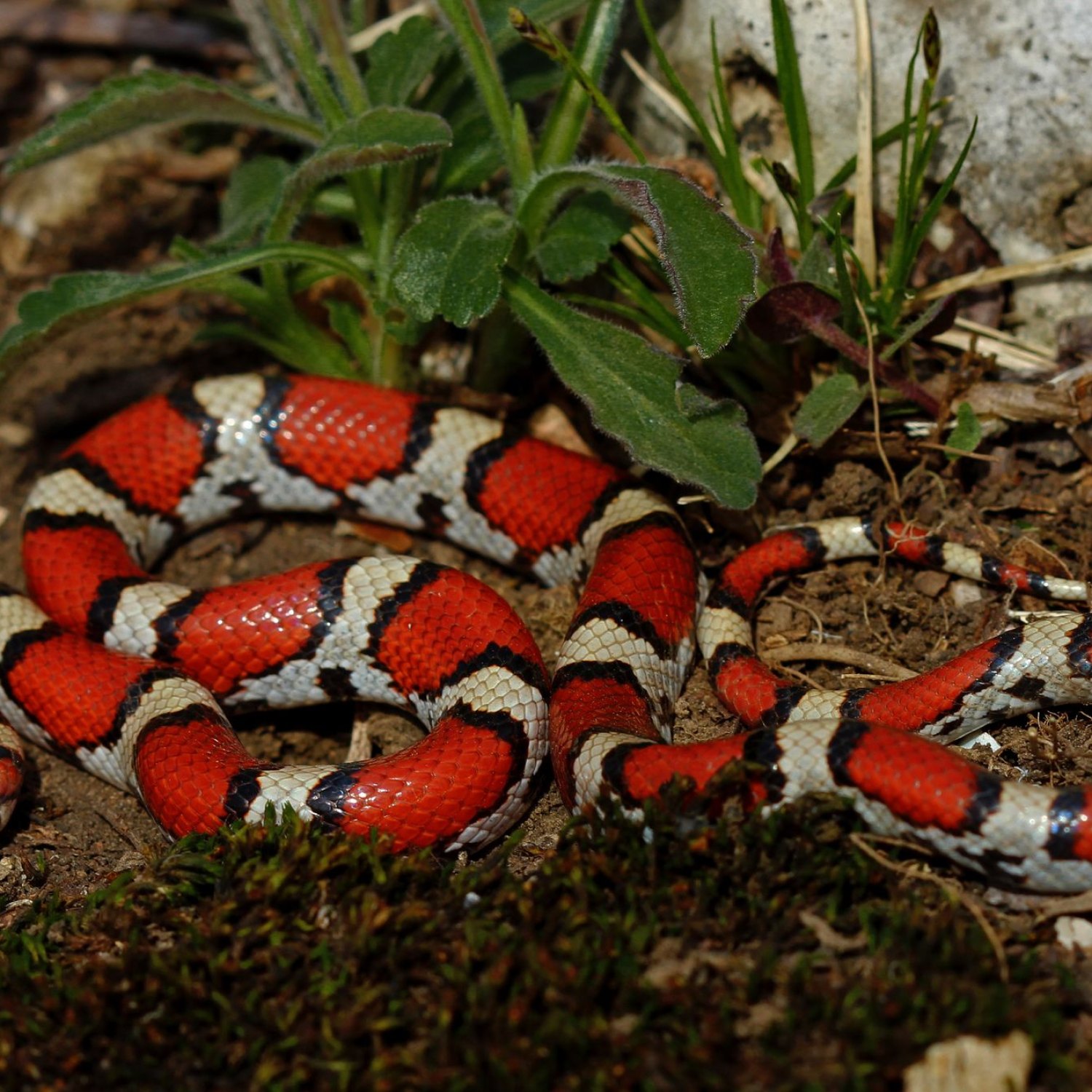
Milk Snake
2 to 4 feet
Milk snakes, part of the Colubridae family, are a popular choice for reptile enthusiasts. With their striking colors and manageable size of 2 to 4 feet, they make great pets. Commonly found in the Eastern and Central United States, these slender and cylindrical snakes are non-venomous and feed on rodents. However, they are often mistaken for coral snakes due to their similar color patterns. Remember to do thorough research before adding a milk snake to your collection!
Animal Details Summary:
Common Name: Milk Snake
Kingdom: Animalia
Habitat: Forests, grasslands, rocky areas
The Mesmerizing Milk Snake: A Colorful Beauty of North and Central America
Snakes are undoubtedly one of the most intriguing and fascinating creatures on earth. Their unique physical characteristics and behavior have always captured the imagination of humans. One such mesmerizing serpent is the Milk Snake, scientifically known as Lampropeltis triangulum. With its bright and vibrant colors, slender body, and intriguing feeding method, the Milk Snake is an incredible addition to the world of reptiles Milk Snake. Join us as we dive into the world of these colorful beauties and unravel the secrets of their existence.HTML
Classification and Habitat
The Milk Snake belongs to the Animalia kingdom, Chordata phylum, Reptilia class, Squamata order, and Colubridae family. This non-venomous and harmless snake can be found in various habitats in North and Central America. These include forests, grasslands, and rocky areas, making them versatile and adaptable creatures.HTML
Geographical Distribution and Country of Origin
Milk Snakes are widely distributed in the eastern and central parts of the United States, as well as some parts of Canada and Mexico. They are commonly found in states such as New York, Tennessee, North Carolina, and Georgia. In Canada, the Milk Snake can be spotted in Ontario and Quebec, while in Mexico, they can be found in the Chihuahua and Sonora regions. The United States is considered the country of origin for this beautiful and fascinating species.HTML
Physical Characteristics: Coloration, Body Shape, and Length
One of the most striking features of the Milk Snake is its colorful bands of red, black, and yellow or white Marans Chicken. These bands, also known as rings, wrap around the snake's body, giving it a distinctive and eye-catching appearance. The colors may vary slightly depending on the region and subspecies. This coloration is known as "mimicry," which helps the snake to blend in with its surroundings and protect itself from predators.Apart from its vibrant coloration, the Milk Snake has a slender and cylindrical body shape, making it an excellent climber and burrower. Its head is slightly broader than its body, and it has a pointy snout, which helps it in digging and burrowing. An adult Milk Snake can grow up to 2 to 4 feet in length, making it a medium-sized snake compared to other snake species.
HTML
Feeding Method and Diet
The Milk Snake is a carnivorous reptile, meaning it feeds on other animals. It has a unique feeding method called constricting. This snake does not have venom, so it kills its prey by wrapping its body around them and suffocating them. This method is similar to that of its distant cousin, the boa constrictor. The Milk Snake's diet mainly consists of small mammals, such as mice, voles, and shrews, and sometimes birds and eggs.HTML
Hunting Habits and Adaptations
Hunting for prey can be a challenging task for any animal, and snakes are no exception. Therefore, the Milk Snake has developed several adaptations that help it in capturing its prey. Their triangular-shaped head aids in swallowing larger prey, as their jaws can stretch wider than their bodies. Milk Snakes also have excellent eyesight, allowing them to spot their prey from a distance. Their forked tongue serves as an olfactory organ, which helps them to locate their prey's scent and track them down.HTML
Threat Level and Conservation Status
Despite their unique appearance and behavior, Milk Snakes are considered harmless to humans. They are, however, hunted by some people due to their striking and colorful skin, which they use for fashion and accessories. In some regions, the destruction of their natural habitats due to human activities has also posed a threat to their population. Despite these challenges, the Milk Snake is listed as "Least Concern" on the IUCN Red List, thanks to its widespread distribution and adaptability.HTML
Human Encounter and Mythology
Humans have always been fascinated by snakes, and the Milk Snake is no exception. Due to its vibrant coloration, this snake has been both idolized and feared by different cultures. In some places, they are considered sacred and kept as pets, while in others, they have been stereotyped as evil creatures and associated with dark powers. Some Native American tribes believe that the Milk Snake has healing powers and can bring good luck.HTML
Role in Nature and Ecosystem
Every living creature has a purpose in the ecosystem, and the Milk Snake is no different. These colorful serpents play an essential role in maintaining the balance of their habitat. They help to keep the population of small mammals in check, preventing overgrazing and preserving plant life. They also serve as prey for larger predators, such as birds of prey, and help to regulate their population.HTML
Threats and Conservation Efforts
As mentioned earlier, the Milk Snake is facing different threats, such as habitat destruction and illegal poaching. But several conservation efforts have been put in place to protect this species. Organizations such as Partners in Amphibian and Reptile Conservation (PARC) and the IUCN Snake Specialist Group are working to conserve the Milk Snake and other reptiles. These organizations focus on increasing public awareness, conducting research and surveys, and implementing conservation plans to protect the Milk Snake's habitat.HTML
Interactions with Humans
Apart from their role in various cultures, humans also encounter Milk Snakes in their natural habitat. These snakes are generally docile and shy, and they will avoid humans as much as possible. But if cornered or threatened, they can strike, but their bites are not venomous. Therefore, it is essential to leave them alone and not try to handle them unless you are an experienced handler.HTML
Conclusion
In conclusion, the Milk Snake is an exceptional species of reptile that has captured the imagination of humans for centuries. Its colorful bands, slender body, and unique feeding method make it a remarkable addition to the world of snakes. Unfortunately, due to various threats, their population is declining in some regions, making it crucial for us to protect and conserve them. Let us appreciate these beautiful creatures and strive to coexist with them in harmony. After all, snakes play an essential role in maintaining a healthy and balanced ecosystem, and we should strive to protect them for generations to come.

Milk Snake
Animal Details Milk Snake - Scientific Name: Lampropeltis triangulum
- Category: Animals M
- Scientific Name: Lampropeltis triangulum
- Common Name: Milk Snake
- Kingdom: Animalia
- Phylum: Chordata
- Class: Reptilia
- Order: Squamata
- Family: Colubridae
- Habitat: Forests, grasslands, rocky areas
- Feeding Method: Carnivorous
- Geographical Distribution: North and Central America
- Country of Origin: United States
- Location: Eastern and Central United States
- Animal Coloration: Bright and colorful bands of red, black, and yellow or white
- Body Shape: Slender and cylindrical
- Length: 2 to 4 feet
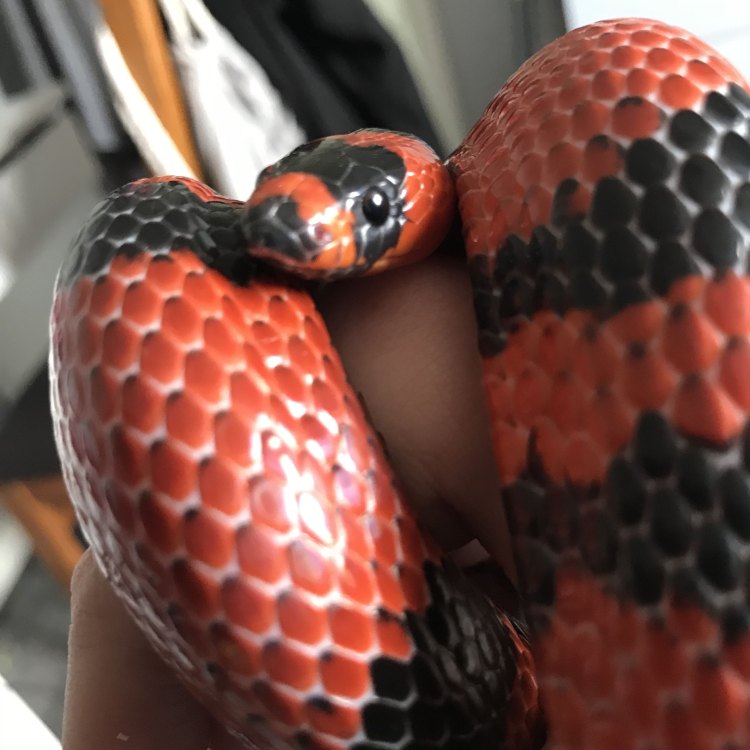
Milk Snake
- Adult Size: 2 to 4 feet
- Average Lifespan: 10 to 15 years
- Reproduction: Oviparous
- Reproductive Behavior: Males engage in combat during the mating season
- Sound or Call: Hissing and rattling of tail, but generally silent
- Migration Pattern: Non-migratory
- Social Groups: Solitary
- Behavior: Nocturnal and secretive
- Threats: Habitat loss and fragmentation, road mortality, persecution by humans
- Conservation Status: Least Concern
- Impact on Ecosystem: Control of rodent populations
- Human Use: Captivity for pet trade
- Distinctive Features: Distinctive bright and colorful bands
- Interesting Facts: The saying 'red on yellow, kill a fellow; red on black, venom lack' can be used to distinguish venomous coral snakes from harmless milk snakes
- Predator: Birds of prey, larger snakes
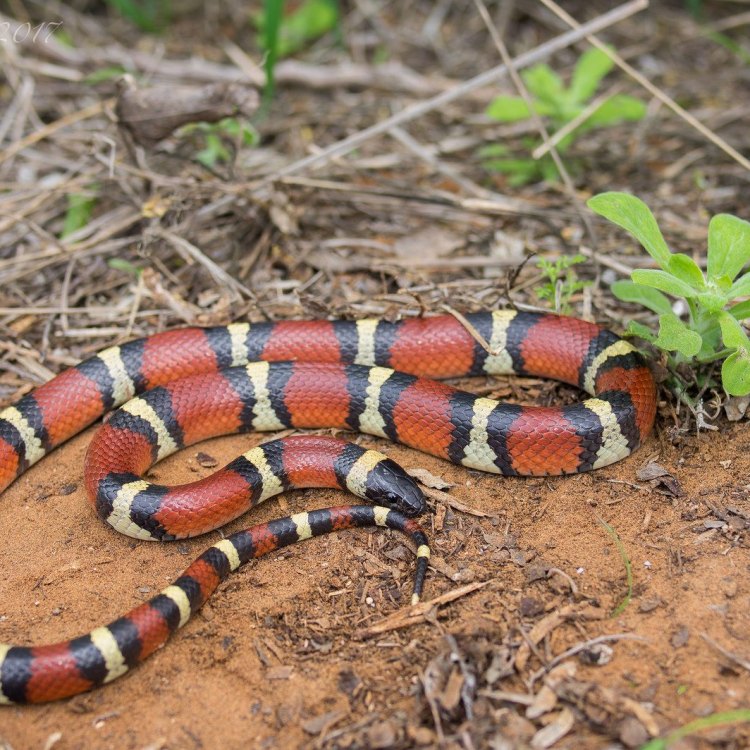
Lampropeltis triangulum
The Marvelous Milk Snake: A Master of Mimicry
The milk snake, also known as Lampropeltis triangulum, is a fascinating reptile species that has captured the hearts of many snake enthusiasts. With its striking and unique appearance, the milk snake has become a popular choice for pet owners. But this species is more than just a pretty face. It possesses many interesting and distinctive features that make it a valuable part of the ecosystem it inhabits PeaceOfAnimals.Com.The milk snake is a non-venomous species of the Colubridae family, which includes other popular snake breeds such as king snakes and corn snakes. It is found in North America, from the Canada-United States border down to Central America. They have also been introduced to some parts of Europe due to the pet trade. But despite their widespread distribution, this species has faced numerous threats that have put their survival at risk.
Let's delve deeper into the unique features of the milk snake and learn more about its behavior, threats, conservation status, and impact on the ecosystem.
The Incredible Appearance of the Milk Snake
The milk snake is a visually striking specimen with a distinctive pattern of bright bands spanning its body. The colors of these bands vary depending on the subspecies, but they mainly consist of red, black, and yellow or white. Due to its similarity to the venomous coral snake, a common saying has been associated with the milk snake, "red on yellow, kill a fellow; red on black, venom lack." This serves as a useful tool for differentiating between the two species Mouse.Apart from its distinctive banding, the milk snake has a sleek and slender body that can range from 2 to 4 feet in length when fully grown. Its head is also small and pointed, giving it a non-threatening appearance. But don't be fooled by its harmless exterior, as the milk snake is a skilled predator that preys on small animals such as rodents, lizards, and even other snakes.
A Life of Solitude and Stealth: The Behavior of the Milk Snake
Milk snakes are primarily solitary creatures, with minimal social behavior or interaction. They are nocturnal, meaning they are active at night, and are secretive by nature, preferring to hide and avoid confrontation. This explains why milk snakes are rarely seen and are considered elusive. They are also skilled at blending into their surroundings, making it difficult for predators to detect them.During the breeding season, male milk snakes engage in combat with other males to compete for a female's attention. This behavior is commonly seen in other snake species as it ensures the strongest and healthiest males mate with the females, increasing the chances of producing equally healthy offspring.
The Life Cycle of a Milk Snake
The milk snake is an oviparous species, meaning they lay eggs to reproduce. Females lay an average of 10 to 12 eggs in the spring, which they then bury underground. These eggs will hatch after about two months, and the baby milk snakes will be left to fend for themselves. Unlike other species of snakes, milk snakes do not provide parental care for their offspring.Once hatched, the juvenile milk snakes have a lifespan of about 10 to 15 years. As they grow older, they tend to become more active during the day, mainly during the early morning and late afternoon. This is known as basking behavior, where they soak up the sun's warmth to help regulate their body temperature.
Threats to the Milk Snake
Despite its resilient nature, the milk snake faces several threats that put its survival at risk. Habitat loss and fragmentation is one of the major concerns for this species. As human development and urbanization continue to encroach on their natural habitats, milk snakes are forced to adapt or move to new territories, which can be challenging and dangerous.Road mortality is also a significant threat to milk snakes. As they are primarily nocturnal, they often fall victim to cars while crossing the roads at night. This not only affects the milk snake population but also disrupts the balance of the ecosystem. This brings us to the next point, the impact of milk snakes on the environment.
Beneficial to the Ecosystem: The Impact of Milk Snakes
As with most predator species, the milk snake plays an essential role in controlling rodent populations. By feeding on small rodents, they help regulate their numbers and prevent overpopulation. This, in turn, helps maintain the balance of the ecosystem, ensuring the survival of other species that depend on these rodents for their food source.Fighting for Survival: Conservation Status of the Milk Snake
Despite their numerous threats, the milk snake is classified as a species of Least Concern by the International Union for Conservation of Nature (IUCN). This is due to their wide distribution and substantial population in their range. However, it is crucial to note that some subspecies of milk snakes are considered endangered, such as the scarlet kingsnake and the scarlet milk snake.To ensure the survival of milk snakes, conservation efforts are being implemented, such as protected areas and captive breeding programs. It is also essential for individuals to educate themselves on the proper care and handling of milk snakes if kept as pets. The pet trade is another aspect that needs to be carefully monitored to prevent overexploitation of this species.
A Marvel of Mimicry: The Human Use of Milk Snakes
The milk snake has also found its way into human homes as a popular choice for a pet snake. Due to their striking appearance, docile nature, and ease of care, milk snakes have become a favorite among reptile enthusiasts. However, it is crucial to note that owning a milk snake as a pet requires a substantial amount of knowledge, commitment, and proper care to ensure the snake's well-being.Catching a Glimpse of the Magnificent Milk Snake
If you wish to catch a glimpse of the stunning milk snake in the wild, your best bet is to go out at night during the warmer months. Look for areas with dense vegetation, such as forests and grasslands, as these are the preferred habitats of milk snakes. And if you're lucky, you may spot one of these elusive creatures making its way through the night.In conclusion, the milk snake is a remarkable species with many unique features that make it stand out in the reptile world. Its distinctive appearance, solitary behavior, and important role in the ecosystem make it a species worth protecting and appreciating. So, the next time you come across a milk snake, take a moment to admire its beauty and acknowledge its importance in the natural world.
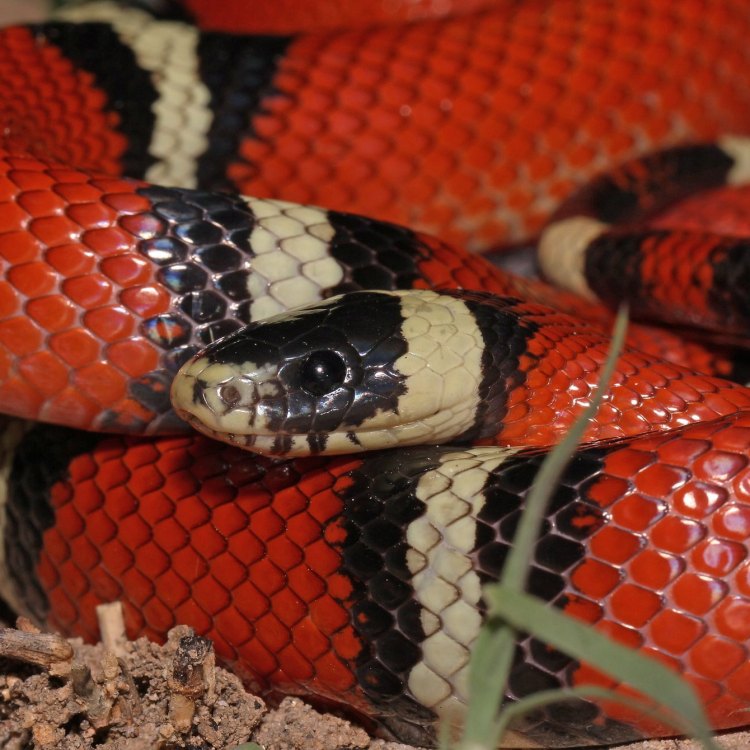
The Mesmerizing Milk Snake: A Colorful Beauty of North and Central America
Disclaimer: The content provided is for informational purposes only. We cannot guarantee the accuracy of the information on this page 100%. All information provided here may change without prior notice.


